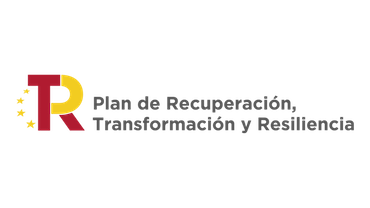
CEF 2021-2027
The general objective of the CEF 2021-2027 is to build, develop, modernise and complete trans-European networks, taking into account the long-term decarbonisation commitments of the EU, and thereby contribute to smart, sustainable and inclusive growth and improving territorial, social and economic cohesion.
The CEF will contribute to the development of projects of common interest related to efficient, interconnected and multimodal networks and infrastructures for sustainable, smart, interoperable, inclusive, accessible, resilient and safe mobility. It will also favour a more sustainable modal composition of the transport system, with a view to meeting the EU milestones of climate neutrality and zero pollution by 2050.
BilbOPS project
The BilbOPS project currently being rolled out by the Port Authority of Bilbao is a strategic investment to electrify the container, cruise and ferry docks by deploying OPS (onshore power supply) technology (also known as cold ironing) in the port, with 11 connection points. The initiative requires an investment of EUR 51.8 million, of which 30%, i.e. EUR 14.2 million, will be funded through the CEF Transport 2021-2027 call for proposals. The project has also secured a EUR 4.5 million grant for the new A5 Quay through the Recovery and Resilience Facility.
The BilbOPS project will enable the Port of Bilbao to progress towards meeting the EU “Fit For 55” objectives, reducing the port’s greenhouse gas emissions by 40%.
Through this project and other complementary measures, we will be in a position to deliver the 55% emissions reduction target set by the EU for 2030.
1.CEF Funds – Connecting Europe Facility
Since January 2014, the European Union has a new transport infrastructure policy that connects the continent between East and West, North and South. This policy aims to close the gaps between Member States’ transport networks, remove bottlenecks that still hamper the smooth functioning of the internal market and overcome technical barriers such as incompatible standards for railway traffic.
Thus the TEN-T Network, Trans European Transport Networks was born, having been conceived as a planned whole of priority networks for promoting and strengthening seamless transport chains for passenger and freight throughout the European Union, while trying to keep up with the latest technological trends.
This policy is vital for Europe to re- boost its economy and generate new work posts. The approved budget, in combination with other EU financing sources and the European Investment Bank, should significantly stimulate investment and guarantee successful implementation of the new infrastructures policy.
Its main aims are:
- Intermodality. Interoperability.
- Coordinated infrastructures development.
- Improvement in cross-frontier sections.
- Elimination of bottlenecks.
The funding instrument created by the European Commission is known as the Connecting Europe Facility (CEF) which supports the investment for building new transport infrastructures or for modernising or improving existing ones.
The European Commission European Climate, Infrastructure and Environment Executive Agency (CINEA) was created by the European Commission as the successor of the Trans-European Transport Network Executive Agency (TEN-T EA) whose mission is to support the Commission by contributing its experience to infrastructures, research and innovation projects in the fields of transport, energy and telecommunications and to promote synergies among these activities in benefit of the growth and of the citizens of the EU.
The TEN Network will enable:
- 94 large ports to be linked with railway lines and roads.
- 38 key airports to be linked by rail to large towns.
- 15,000 kilometres of rail track to be converted into high-speed lines.
- 35 cross-border projects to be carried out.
The Network has been structured into 9 corridors managed by coordinators nominated to lead the development of the same. The Port of Bilbao is a Core Port of Atlantic Corridor connecting ports from the west of the Iberian Peninsula, such as Sines and Lisbon, to ports like Bilbao or Bordeaux with the North Sea.
2.ERDF – European Regional Development Fund
The European Regional Development Fund (ERDF) is one of the main financial instruments of the EUʼs cohesion policy. Its purpose is to contribute to reducing disparities between the levels of development of European regions and to improve living standards in the least-favoured regions. Particular attention is paid to regions which suffer from severe and permanent natural or demographic disadvantages, such as the northernmost regions, which have very low population densities, and island, cross-border and mountain regions.


3.Nextgen EU Funds – The Recovery, Transformation and Resilience Plan (RTRP)
In the context of the Covid-19 crisis, the European Commission has strengthened the existing framework for supporting Member States by providing direct financial support through an innovative tool, the NextGeneration EU funds. The long-term budget of the European Union, coupled with NextGenerationEU (NGEU), form the largest stimulus package ever financed in Europe. The centrepiece of NextGenerationEU is the Recovery and Resilience Facility (RRF), an instrument to provide grants and loans to support reforms and investments in EU Member States.
To this end, Member States have drawn up their own recovery and resilience plans – the Recovery, Transformation and Resilience Plan (RTRP), in the case of Spain – as part of their National Reform Programmes (NRP). The RTRP has been drawn up on the basis of four cross-cutting axes, namely Ecological Transition, Digital Transformation, Territorial and Social Cohesion, and Gender Equality, and is structured around ten lever policies that define the bulk of investments to be made in areas ranging from the urban agenda, depopulation and agricultural development, to the modernisation and strengthening of the tax and pension system, the improvement of infrastructure and ecosystems, education, science and business modernisation, amongst others.
In turn, these ten lever policies comprise 30 components, or lines of action, both regulatory and investment-focused, which enable investment programmes and reforms to be rolled out in a coherent manner. One such component is Sustainable, Safe and Connected Mobility (Component 6), which includes a series of measures and investments aimed at modernising, digitalising and improving the safety and sustainability of key transport infrastructures.
The actions taken by the Port Authority of Bilbao and funded by the RTRP are encompassed within this Component 6, or more specifically, under the Investment 3 section of Component 6, with the title “Intermodality and Logistics”. This section provides for different actions aimed at improving the efficiency of the freight transport and distribution system by promoting intermodality and modernising and improving our distribution centres.
1. Sewer Network in the Outer Abra of the Port of Bilbao: Stages I and II
This action consists of setting up a new sewer system in the Port of Bilbao and connecting it to the so-called port interceptor. There are currently numerous wastewater treatment plants scattered throughout the port area designed to improve the quality of sewage and industrial water before it is discharged into the sea. They range in size and type, from septic tanks for the smallest discharges to treatment plants with different primary and secondary treatment processes for larger industrial discharges. Some of this infrastructure is owned by the Port Authority of Bilbao but most of it belongs to the concessionary companies, who are responsible for managing its operation and maintenance. The new sewer system will replace the existing system with a network of collectors that will transport sewage and industrial water to the Galindo Wastewater Treatment Plant, managed by the Bilbao Bizkaia Water Consortium. In this way, the only wastewater to be discharged into the sea will be rainwater and cooling water, the polluting potential of which is lower.
The financing, construction and commissioning of the new fully integrated wastewater treatment system of the Port of Bilbao is being taken forward in three stages which are operationally interrelated. Firstly, the Santurtzi docks and Central Breakwater, the focal points of Stage I activity and work to install equipment for the collection and diversion of wastewater. Secondly, additional works for wastewater collection and diversion in Stage II will be centred in the docks of the expansion area of the port. Construction projects for these two stages have already been drawn up. Lastly, Stage III works will be performed in the industrial port area of the municipality of Zierbena, separated by the Zierbena port bridge. The project for this stage has yet to be drafted.
An agreement regulating the aforementioned collaboration has been drawn up to determine the conditions under which these actions are to be taken forward and the commitments entered into by the three participant organisations, namely the Port Authority of Bilbao, the Basque Water Agency (URA) and the Bilbao Bizkaia Water Consortium. This agreement stipulates that the Basque Water Agency shall be responsible for the tendering and contracting of the works corresponding to Stages 1 and 2 of the project, with funding provided in equal parts by URA and the Port Authority of Bilbao.
With regard to the Port Authority of Bilbao, the actions included under this Agreement are funded by the European Union, under the Recovery, Transformation and Resilience Plan, in Component 6: “Sustainable, safe and connected mobility”, Investment 3: “Intermodality and logistics”, Project or Line of Action: “Improvements in Accessibility, Sustainability, Digitalisation and Security of Ports”, to comply with Milestones 95 and 96 and Targets 95, 96 and 98.
2. Supply and installation of efficient lighting with LED technology in the external lighting network of the ZAD-2 (Storage and Distribution Area) of the Port Authority of Bilbao.
The scope of the works consists of the supply and installation of a 2 km-long three-phase line of 16 mm2 cable, including earthing network and automatic circuit breakers in the existing lighting control panel, to supply 27 lighting points equipped with 34 LED light fittings.
Each light fitting will be equipped with a CITY TOUCH wireless remote management module (via GPRS 4G), with data service for 10 years, for integration in the remote management application of the Port Authority of Bilbao, via web, known as INTERACT CITY, which enables remote management of switch-on, switch-off and regulation of lighting levels, amongst other functions.
This action is designed to maximise efficiency, as the installation of LED lights reduces power consumption by approximately 60% compared to conventional bulbs, thereby reducing energy consumption and associated GHG emissions.
Upgrading the lighting system implies deploying energy-efficient light sources, thereby meeting the minimum requirements set out for the different components and systems in the national implementing measures applicable under Directive 2010/31/EU.
At the same time, an estimated reduction of 11,221.59 kg of CO₂ emissions has been calculated as a result of deploying LED technology to replace conventional lighting. This represents a 68% reduction in emissions, a figure which contributes substantially to the mitigation of climate change.
Budget: EUR 83,332.56 (100% FINANCED)
3. Supply and installation of electric vehicle recharging points in the facilities of the Port Authority of Bilbao in Santurtzi.
Budget: EUR 43,535.04 (100% financed)
Description:
Supply and installation of 15 recharging points for the fleet of electric vehicles of the Port Authority of Bilbao. In addition, a Recharging Point Management System has also been set up to collect all the technical information relating to each recharging point. This system not only enables the full integration and commissioning of the equipment but also provides for the monitoring of the recharging points, proactively identifying errors and incidents so that corrective and preventive maintenance can be carried out on the equipment.
The measure contributes to the transport decarbonisation targets through power supply for the fleet of vehicles of the Port Authority of Bilbao, replacing conventional fuels with cleaner ones. The deployment of the recharging points has led to a reduction of 39,347.65 kg of CO₂ since they were first set up.
4. Project for the refurbishment of the facilities of the Bilbao Port Authority’s Integrated Protection and Emergency Centre building in Santurtzi.
Budget: EUR 453,732.78 (100% financed)
Description:
Execution of the work for the project to refurbish the Integrated Protection and Emergency Centre building of the Port Authority of Bilbao in Santurtzi. This involves a series of actions designed to improve the energy efficiency of the building, including the replacement of conventional lighting with LED lighting and setting up a system for the production and storage of domestic hot water.
The action contributes substantially to mitigating climate change, on the one hand, in the replacement and installation of energy-efficient light sources, such as LED, representing a reduction in power consumption of approximately 60% compared to conventional bulbs, and on the other hand, in the replacement of an oil-fired boiler with heat pumps for the production of domestic hot water (DHW).
This action is expected to reduce CO₂ emissions by 102,046.82 kg.
5. Setting up an OPS in Dock A5
This action is part of a wider project which includes onshore power supply to ships berthed at other docks in the port of Bilbao, and the setting up of PV infrastructure. In this respect, however, only the part corresponding to Dock A-5 will be financed by the RTRP.
The action, planned to be taken forward over the course of 2023 and 2024 with a planned budget of EUR 4.5 million, will contribute to the decarbonisation of transport, and is designed to bring about a significant reduction in the level of atmospheric and noise emissions and to improve the air quality of the port and nearby towns and communities.
- IBUK – Intermodal Corridor
- 2011-EU-21009-M

- TEN-T 2011
- More information
- Efficient Operations and Environmental Performance Improvement of the Port of Bilbao
- 2012-ES-91171-P

- TEN-T 2012
- More information
- Future proofing Bilbao – Core port of the Atlantic Corridor
- 2014-ES-TM-0433-M

- CEF 2014
- More information
- Biscay Line – Multiple port Finland – Estonia – Belgium – Spain long distance MoS, relevant to many core network corridors
- 2014-EU-TM-0487-M

- CEF 2014
- More information

 Port access
Port access